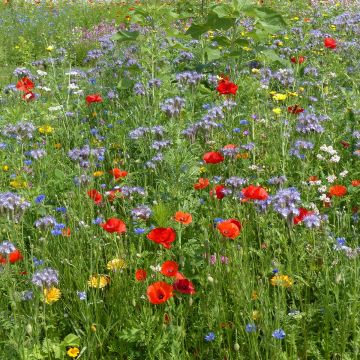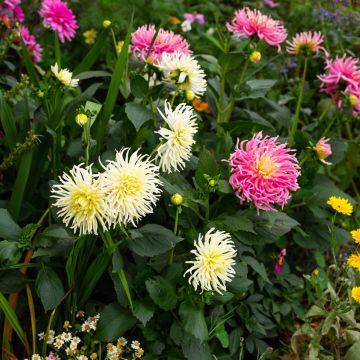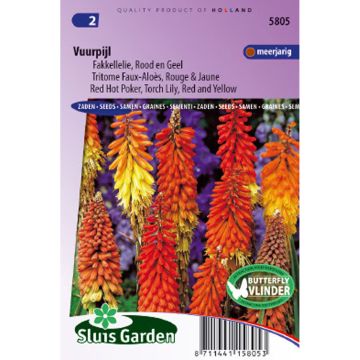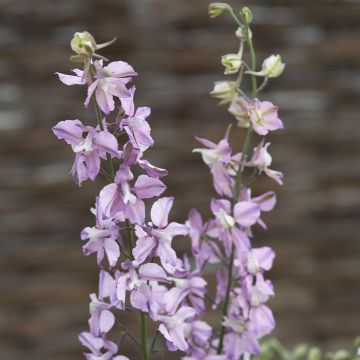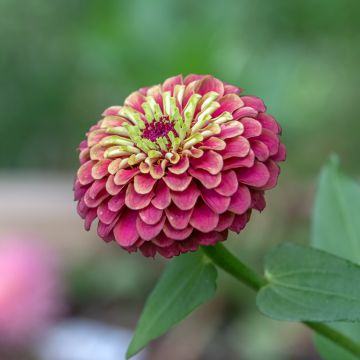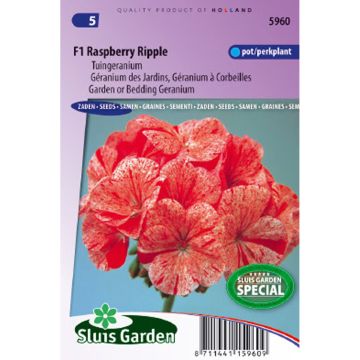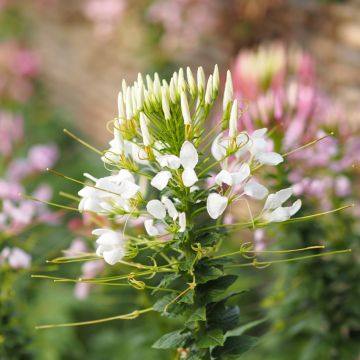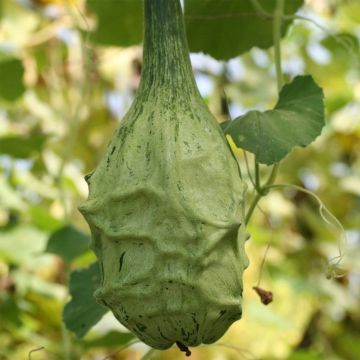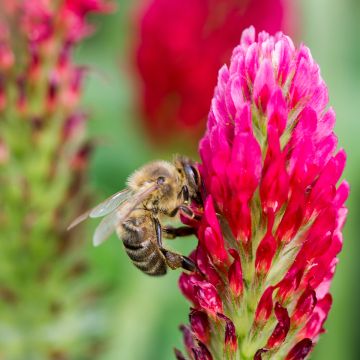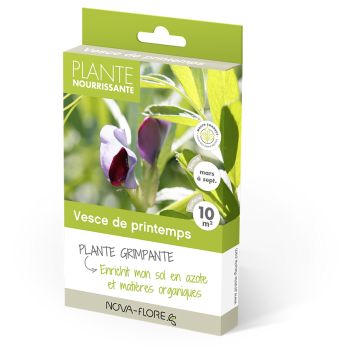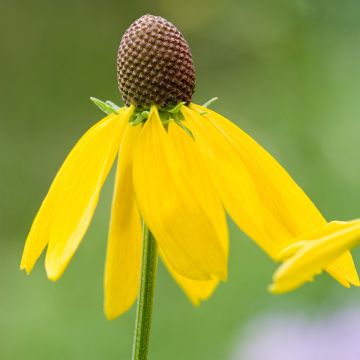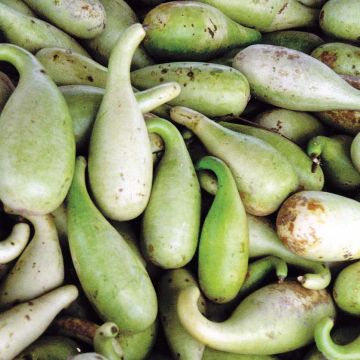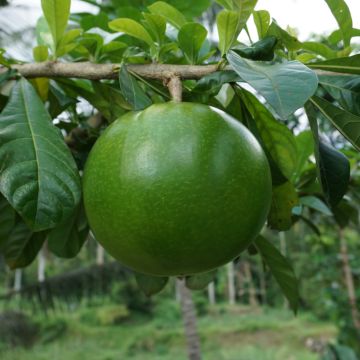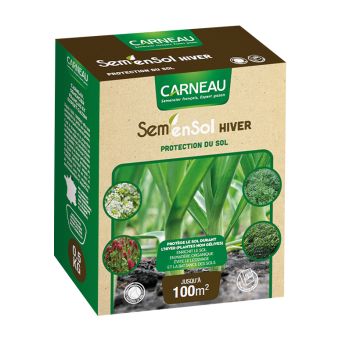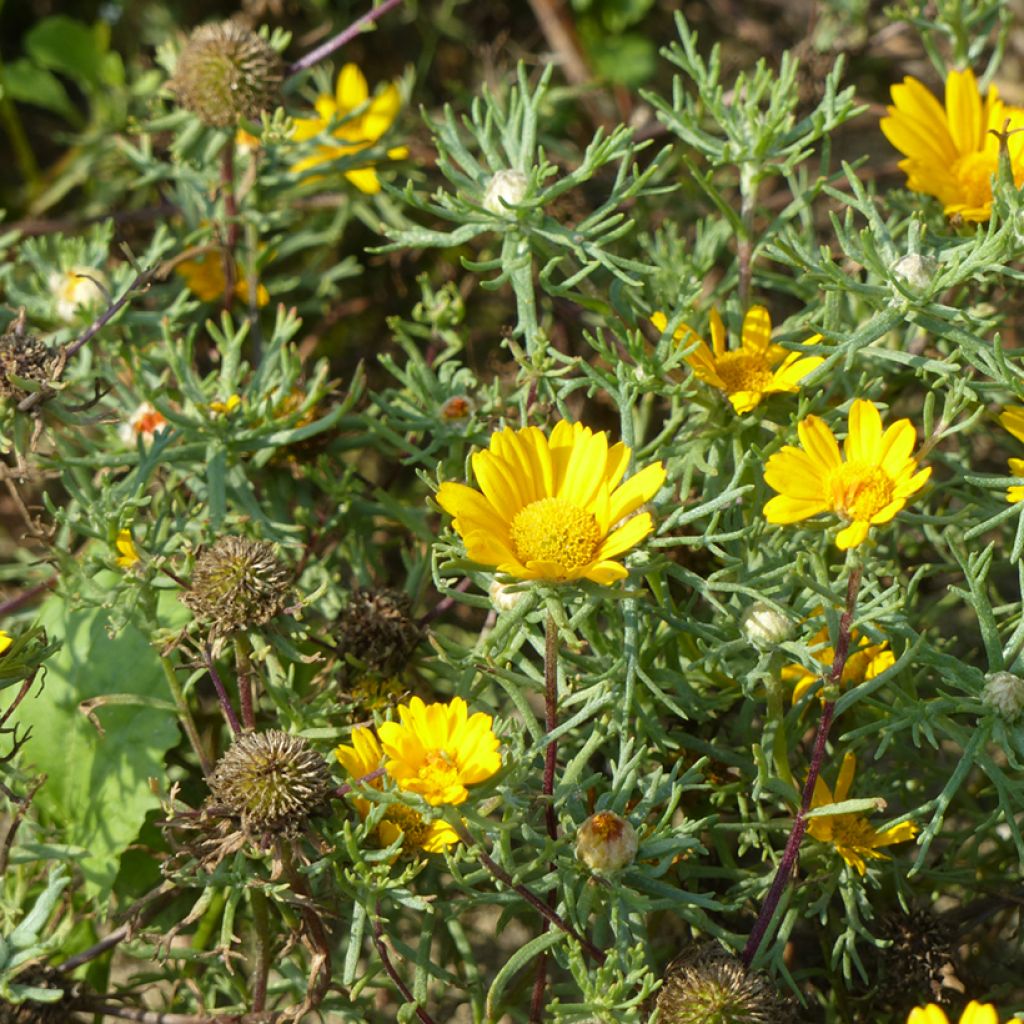

Cladanthus arabicus Golden Crown Seeds
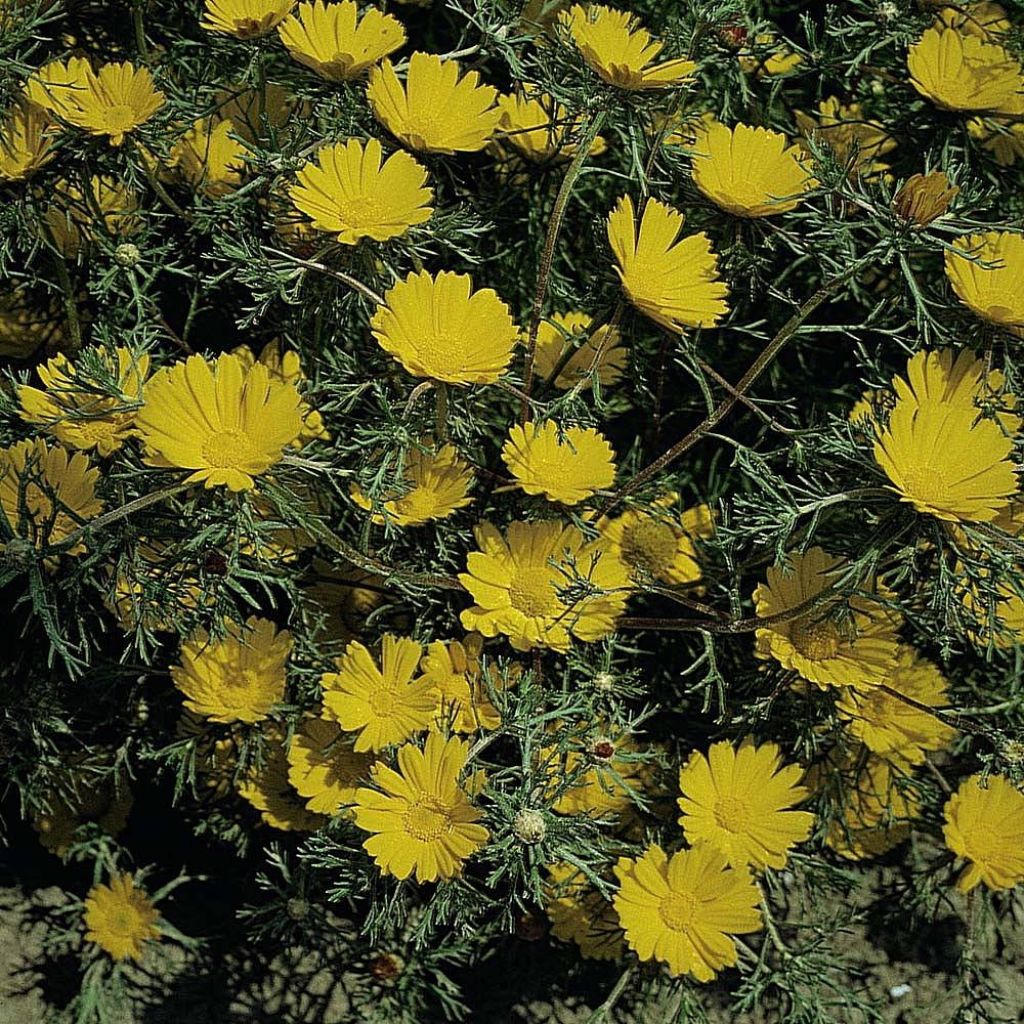

Cladanthus arabicus Golden Crown Seeds
Cladanthus arabicus Golden Crown Seeds
Cladanthus arabicus Golden Crown
This item cannot be shipped to the selected country
Dispatch by letter from €3.90
More information
Schedule delivery date,
and select date in basket
This plant carries a 6 months recovery warranty
More information
We guarantee the quality of our plants for a full growing cycle, and will replace at our expense any plant that fails to recover under normal climatic and planting conditions.
Seed-only orders are dispatched by sealed envelope. The delivery charge for seed-only orders is €3.90.
Does this plant fit my garden?
Set up your Plantfit profile →
Description
Cladanthus arabicus 'Golden Crown', contrary to what its complicated name suggests, is a simple, yet delightful annual plant: its feathery, silvery foliage is reminiscent of that of the California poppy and its long-lasting blooms look like golden yellow cosmos resting on a nest of leaves. From its North African to Saharan origins, this plant has retained a great love for sunshine and well-drained soils, even dry and rocky ones. Sow in spring, directly in its final position, in sunny borders and rock gardens.
Cladanthus arabicus is a plant with an annual growth cycle, native to the Maghreb (Moroccan Anti-Atlas, Algeria, Tunisia), Libya, Sicily and southeastern Spain. Its natural distribution also includes areas such as the Western Sahara. In the wild, it grows in pastures, cultivated fields, stony areas and steppes in dry regions. It is often found rooted in rock crevices. Like all plants of dry to arid climates, it adapts its growth and flowering cycle to that of the rains: in our cool temperate climates, Cladanthus germinates in spring and blooms all summer long. On the other hand, in Mediterranean regions, it rather germinates at the end of summer, goes dormant in the winter and flowers in spring. It belongs to the family Asteraceae, as can be seen from its flowers arranged in flower heads. This unusual and charming plant is still a rare find in ornamental gardens.
'Golden Crown' has been selected for its beautiful, bright gold flowers. This plant reaches an average 35-45 cm in height when in bloom, developing one upright primary stem which branches into horizontal to ascending secondary stems that together form a 40 cm wide spreading mound. It is entirely covered with a fine pubescence which gives it an elegant silvery sheen. The basal leaves are deeply cut into narrow linear segments while those on the upper part of the stems are almost whole. Flowering takes place from April to August-September, depending on the date of sowing, and last for about 2 months. At the end of the stems, the inflorescences open revealing flower heads 2 to 3 cm across, placed upon a bouquet of small, finely cut leaves. 3 to 5 new stems develop just below each faded flower head, each producing in turn a new flower head. Each flower head is composed of narrow, toothed, yellow 'petals' or outer ligulate flowers that are arranged in a collar centred around an eye of the same pure yellow colour. The blooms attract many foraging insects.
Cladanthus arabicus Golden Crown is definitely worth discovering and is a great plant to sow on dry slopes, in sunny borders and rock gardens. This plant is not any more difficult to grow than the California poppy and is able to generously fill the dry areas of the garden with blooms where few other plants thrive. Modestly sized and really easy to grow, this plant is also well suited to borders of perennials, it works wonders when sown randomly among other plants. Its very bright blooms will look good in a wildflower meadow. To this purpose, it can be mixed with cornflowers, grasses (Stipa, Carex comans, melica), sainfoin, ornamental onion, borage, common motherwort, corn marigold, Eschscholzia californica, cosmos, love-in-a-mist, Helichrysum...
Report an error about the product description
Flowering
Foliage
Plant habit
Botanical data
Cladanthus
arabicus
Golden Crown
Asteraceae
Mediterranean
Other Flower seeds A to Z
Planting and care
Sowing instructions:
Sow Cladanthus from April to May (or from September to October in mild climates), directly in their final position since their roots do not like to be disturbed.
Choose a very sunny location with light, well-drained soil. Prepare the soil well by raking to a fine tilth and removing all weeds. Sow at a depth of 6 mm, in holes or in small rows spaced 30 cm apart. Water the soil regularly with a watering can with a fine rose, especially during dry periods. Germination usually takes 14-21 days. When the seedlings are sufficiently developed to be handled, thin out seedlings and plant them out 30 cm apart.
Growing instructions:
Cladanthus arabicus is not very demanding in terms of soil, but it prefers well-drained, light soils that are not too rich. Plant it in full sun. This plant blooms when the soil is moist, adapting its growth cycle and flowering period to the climate: like love-in-a-mist, it will flower earlier in the south, sometimes disappearing completely in the summer. Robust, fast-growing but not very hardy, this annual plant will grow in every region.
Sowing period
Intended location
This item has not been reviewed yet - be the first to leave a review about it.
Flower seeds
Haven't found what you were looking for?
Hardiness is the lowest winter temperature a plant can endure without suffering serious damage or even dying. However, hardiness is affected by location (a sheltered area, such as a patio), protection (winter cover) and soil type (hardiness is improved by well-drained soil).

Photo Sharing Terms & Conditions
In order to encourage gardeners to interact and share their experiences, Promesse de fleurs offers various media enabling content to be uploaded onto its Site - in particular via the ‘Photo sharing’ module.
The User agrees to refrain from:
- Posting any content that is illegal, prejudicial, insulting, racist, inciteful to hatred, revisionist, contrary to public decency, that infringes on privacy or on the privacy rights of third parties, in particular the publicity rights of persons and goods, intellectual property rights, or the right to privacy.
- Submitting content on behalf of a third party;
- Impersonate the identity of a third party and/or publish any personal information about a third party;
In general, the User undertakes to refrain from any unethical behaviour.
All Content (in particular text, comments, files, images, photos, videos, creative works, etc.), which may be subject to property or intellectual property rights, image or other private rights, shall remain the property of the User, subject to the limited rights granted by the terms of the licence granted by Promesse de fleurs as stated below. Users are at liberty to publish or not to publish such Content on the Site, notably via the ‘Photo Sharing’ facility, and accept that this Content shall be made public and freely accessible, notably on the Internet.
Users further acknowledge, undertake to have ,and guarantee that they hold all necessary rights and permissions to publish such material on the Site, in particular with regard to the legislation in force pertaining to any privacy, property, intellectual property, image, or contractual rights, or rights of any other nature. By publishing such Content on the Site, Users acknowledge accepting full liability as publishers of the Content within the meaning of the law, and grant Promesse de fleurs, free of charge, an inclusive, worldwide licence for the said Content for the entire duration of its publication, including all reproduction, representation, up/downloading, displaying, performing, transmission, and storage rights.
Users also grant permission for their name to be linked to the Content and accept that this link may not always be made available.
By engaging in posting material, Users consent to their Content becoming automatically accessible on the Internet, in particular on other sites and/or blogs and/or web pages of the Promesse de fleurs site, including in particular social pages and the Promesse de fleurs catalogue.
Users may secure the removal of entrusted content free of charge by issuing a simple request via our contact form.
The flowering period indicated on our website applies to countries and regions located in USDA zone 8 (France, the United Kingdom, Ireland, the Netherlands, etc.)
It will vary according to where you live:
- In zones 9 to 10 (Italy, Spain, Greece, etc.), flowering will occur about 2 to 4 weeks earlier.
- In zones 6 to 7 (Germany, Poland, Slovenia, and lower mountainous regions), flowering will be delayed by 2 to 3 weeks.
- In zone 5 (Central Europe, Scandinavia), blooming will be delayed by 3 to 5 weeks.
In temperate climates, pruning of spring-flowering shrubs (forsythia, spireas, etc.) should be done just after flowering.
Pruning of summer-flowering shrubs (Indian Lilac, Perovskia, etc.) can be done in winter or spring.
In cold regions as well as with frost-sensitive plants, avoid pruning too early when severe frosts may still occur.
The planting period indicated on our website applies to countries and regions located in USDA zone 8 (France, United Kingdom, Ireland, Netherlands).
It will vary according to where you live:
- In Mediterranean zones (Marseille, Madrid, Milan, etc.), autumn and winter are the best planting periods.
- In continental zones (Strasbourg, Munich, Vienna, etc.), delay planting by 2 to 3 weeks in spring and bring it forward by 2 to 4 weeks in autumn.
- In mountainous regions (the Alps, Pyrenees, Carpathians, etc.), it is best to plant in late spring (May-June) or late summer (August-September).
The harvesting period indicated on our website applies to countries and regions in USDA zone 8 (France, England, Ireland, the Netherlands).
In colder areas (Scandinavia, Poland, Austria...) fruit and vegetable harvests are likely to be delayed by 3-4 weeks.
In warmer areas (Italy, Spain, Greece, etc.), harvesting will probably take place earlier, depending on weather conditions.
The sowing periods indicated on our website apply to countries and regions within USDA Zone 8 (France, UK, Ireland, Netherlands).
In colder areas (Scandinavia, Poland, Austria...), delay any outdoor sowing by 3-4 weeks, or sow under glass.
In warmer climes (Italy, Spain, Greece, etc.), bring outdoor sowing forward by a few weeks.


































